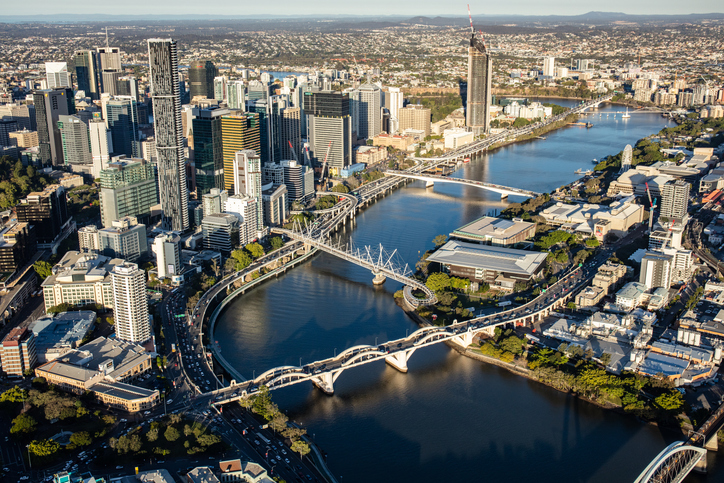THE AUSTRALIAN CAPITAL SETTING A NEW RECORD FOR PROPERTY VALUE FALLS
Property values have fallen hard and fast in this popular city, but it’s done little to dent pandemic rises
Highest property values, biggest dip the next. That’s the outcome for Australia’s northernmost capital on the east coast, with Brisbane property values recording their largest and fastest decline, data from Corelogic reveals.
The fall comes just seven months after values hit their peak after a population surge driven by the pandemic saw an increase of 43 percent. Home values hit a record high on June 19, 2022 but have since declined 10.9 percent, in parallel with eight consecutive interest rate rises since April last year.
Historically, peak-to-trough declines in Brisbane have lasted 14 months and have ranged from value drops of -2.9 percent to -10.8 percent. While the new record is just -0.1 percent compared with previous figures, that fall came over 21 months between April 2010 and January 2012. The latest decline was a much swifter seven month drop.
CoreLogic head of research Eliza Owen said it is worth putting the Brisbane figures into context with the rest of Australia’s capital cities, as well as considering the significant rise in property values in the Queensland capital over the pandemic.
“Brisbane now stands out as one of two capital city markets with record declines, the other being Hobart,” Ms Owen said. “Sydney continues to have the largest peak-to-trough falls of the capital city markets (currently at -13.8 percent), while peak-to-tough falls remain mild in some cities (such as Perth, where values are down just -1.0 percent from a recent peak in August 2022).”
“The record fall in Brisbane home values has not made much of a dent in the gains made during the upswing. The fall in the Brisbane daily HVI follows an upswing of 43.5 percent between August 2020 and 19 June 2022, which was the fastest trajectory of rising values on record. This leaves home values across Brisbane 27.9 percent higher than at the previous trough in August 2020.”
The median dwelling value in Brisbane jumped from $506,553 at the start of the pandemic in March 2020 to $707,658 by the end of last year, Ms Owen said.
“Despite the large decline from peak, Brisbane maintains the third highest gain in value of the capital cities since the start of the pandemic,” she said.
“Only Adelaide and Darwin, which are 42.8 percent and 29.6 percent higher respectively than at the onset of the pandemic, have performed stronger.
“For this reason, there is marginal risk of negative equity for Brisbane homeowners, with the exception of very recent buyers, who purchased around the peak in June 2022 with less than a 20 percent deposit.”
However, there are signs of resilience in the market. Brisbane remains a more affordable option compared with the other east coast capitals, Ms Owen said.
Although housing values remain higher than pre-COVID levels, Brisbane retains a lower price point than Sydney, with a $435,170 difference in median house values and $280,749 difference in median unit values,” she said.
“The gap between Brisbane and Melbourne housing values is also significant, with a $119,697 gap between median house values and $97,692 difference in median unit values.
“This could encourage ongoing housing demand from those willing to migrate to the state, or own an interstate investment.”


